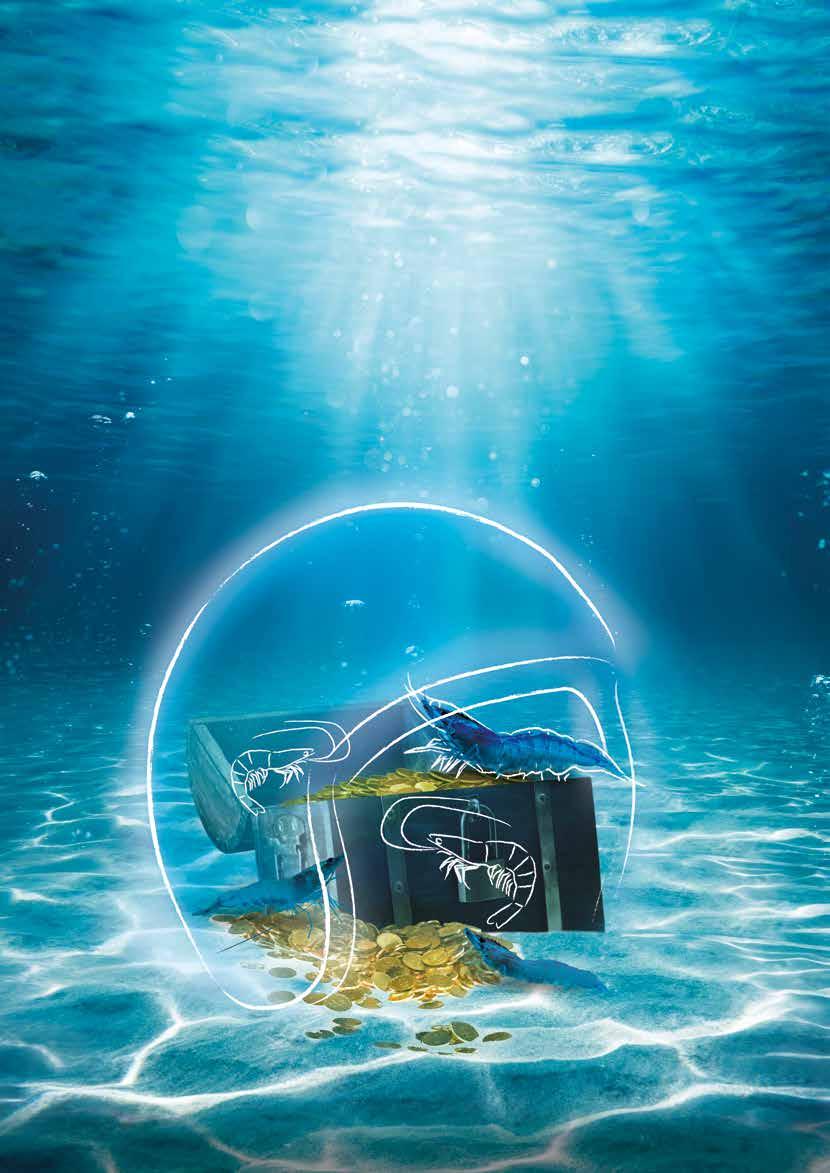
1 minute read
Protect your profits
from THE CRUST - ISSUE #7
by THE CRUST
Mitigate risk through mycotoxin deactivation
In addition to rising feed costs, mycotoxins further impact profitability by impairing growth performance and health status. The risk is never zero. Mycotoxin risk management is the insurance policy to secure feed quality and safety, whilst optimizing productivity.
Reduced risk
Increased productivity and efficiency
Sustainable production
If not us, who? If not now, when? WE MAKE IT POSSIBLE Follow
Every shrimp farmer wants to achieve high and stable productivity from cycle to cycle in their ponds. When talking about productivity, the primary factor that influences it is the carrying capacity. Productivity refers to the level of shrimp production in a cultivation system while carrying capacity refers to the maximum amount of shrimp that can be sustained in the system. Carrying capacity itself is also influenced by various factors.
John A. Hargreaves, an aquaculture consultant, and Editor in Chief of World Aquaculture Magazine, stated at Indonesia Shrimp Retreat 2023 that carrying capacity is the maximum biomass that can be sustained in a production unit. He also described carrying capacity as the capacity of a production system to assimilate organic matter and metabolic wastes, or as the maximum production possible while maintaining water quality within tolerable limits of the cultivated animals.
However, the size of the carrying capacity of a pond is influenced by several limiting factors that vary depending on the production system itself.
Limiting factors at different level system
The limiting factors for carrying capacity vary at each farming system and level. In traditional ponds, carrying capacity is limited by feed input. Without any feed input, as commonly practiced in traditional ponds, the pond’s carrying capacity is only around 200 kg/ha. In other words, if the carrying capacity of traditional ponds needs to be increased, the first step is to add technological touches, especially by adding feed. Furthermore, an aerator can be added to upgrade to a semiintensive system.
Meanwhile, in semiintensive and intensive shrimp farming systems, the






